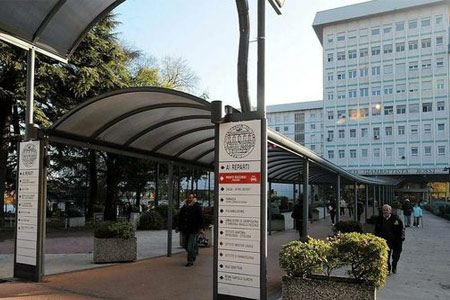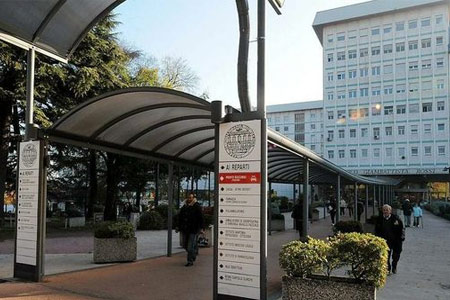- Authors:
-
Cherubini, Valentino; Fargalli, Andrea; Arnaldi, Claudia; Bassi, Marta; Bonfanti, Riccardo; Patrizia Bracciolini, Giulia; Cardella, Francesca; Dal Bo, Sara; Delvecchio, Maurizio; Di Candia, Francesca; Franceschi, Roberto; Maria Galassi, Sabrina; Gallo, Francesco; Graziani, Vanna; Iannilli, Antonio; Mameli, Chiara; Marigliano, Marco; Minuto, Nicola; Monti, Sara; Mozzillo, Enza; Pascarella, Filomena; Predieri, Barbara; Rabbone, Ivana; Roppolo, Rosalia; Schiaffini, Riccardo; Tiberi, Valentina; Tinti, Davide; Toni, Sonia; Scaramuzza, Andrea; Vestrucci, Benedetta; Gesuita, Rosaria
- Title:
-
Glucometrics and device satisfaction in children and adolescents with type 1 diabetes using different treatment modalities: A multicenter real-world observational study
- Year:
-
2024
- Type of item:
-
Articolo in Rivista
- Tipologia ANVUR:
- Articolo su rivista
- Language:
-
Inglese
- Format:
-
Elettronico
- Referee:
-
No
- Name of journal:
- Diabetes Research and Clinical Practice
- ISSN of journal:
- 0168-8227
- N° Volume:
-
210
- Page numbers:
-
1-15
- Keyword:
-
Children and adolescents; DIDS; Diabetes technology; Health related quality of life; Treatment modalities; Type 1 diabetes
- Short description of contents:
- Aims: To analyze metabolic outcomes, diabetes impact and device satisfaction in children and adolescents with type 1 diabetes in Italy who used different treatment modalities for diabetes care in a real-life context. Methods: In this multicenter, nationwide, cross-sectional study, 1464 participants were enrolled at a routine visit. The following treatment modalities were considered MDI + SMBG; MDI + CGM; Sensor Augmented Pump Therapy; predictive management of low glucose; Hybrid Closed Loop (HCL); Advanced Hybrid Closed Loop (AHCL). Health related quality of life was evaluated by the Italian version of the Diabetes Impact and Device Satisfaction Scale (DIDS) questionnaire. Results: Patients treated with AID systems were more likely to have HbA1c ≤ 6.5 %, higher percentage of time with glucose levels between 70 and 180 mg/dL, lower percentage of time with glucose levels above 180 mg/dL, higher device satisfaction, and reduced impact of diabetes. All the therapeutic modalities with respect to MDI + CGM, except for MDI + SMBG, contributed to increase the device satisfaction. HCL and AHCL respect to MDI + CGM were associated with lower diabetes impact. Conclusion: Real-life use of automated insulin delivery systems is associated with reduced type 1 diabetes impact, increased device satisfaction, and achievement of glycemic goals.
- Product ID:
-
139044
- Handle IRIS:
-
11562/1122607
- Last Modified:
-
July 27, 2024
- Bibliographic citation:
-
Cherubini, Valentino; Fargalli, Andrea; Arnaldi, Claudia; Bassi, Marta; Bonfanti, Riccardo; Patrizia Bracciolini, Giulia; Cardella, Francesca; Dal Bo, Sara; Delvecchio, Maurizio; Di Candia, Francesca; Franceschi, Roberto; Maria Galassi, Sabrina; Gallo, Francesco; Graziani, Vanna; Iannilli, Antonio; Mameli, Chiara; Marigliano, Marco; Minuto, Nicola; Monti, Sara; Mozzillo, Enza; Pascarella, Filomena; Predieri, Barbara; Rabbone, Ivana; Roppolo, Rosalia; Schiaffini, Riccardo; Tiberi, Valentina; Tinti, Davide; Toni, Sonia; Scaramuzza, Andrea; Vestrucci, Benedetta; Gesuita, Rosaria,
Glucometrics and device satisfaction in children and adolescents with type 1 diabetes using different treatment modalities: A multicenter real-world observational study
«Diabetes Research and Clinical Practice»
, vol.
210
,
2024
,
pp. 1-15
Consulta la scheda completa presente nel
repository istituzionale della Ricerca di Ateneo 








